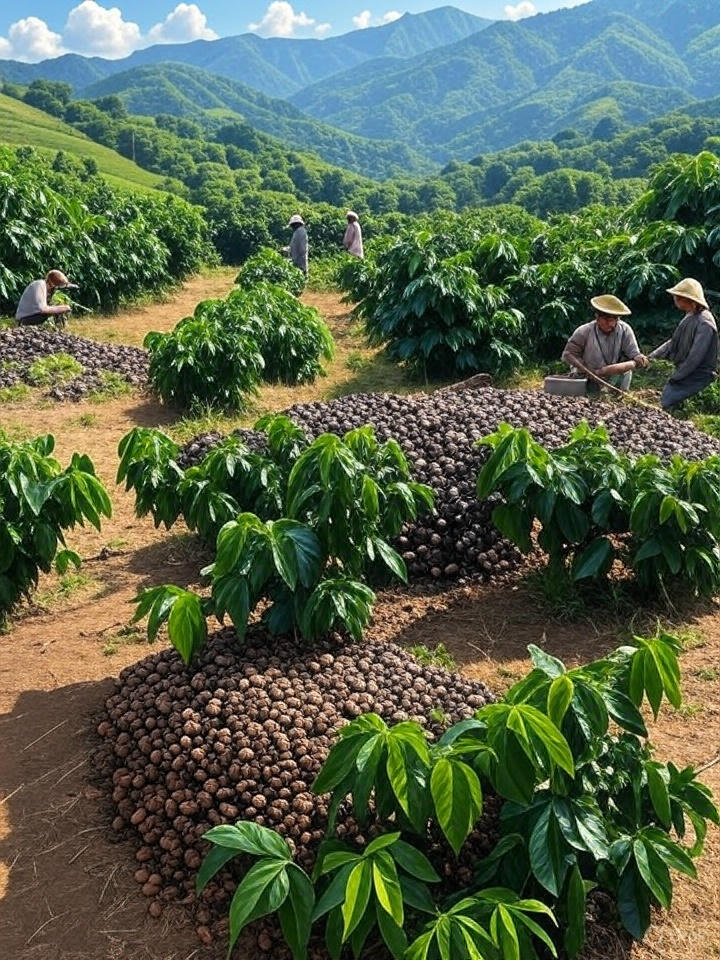
How Altitude Shapes the Flavor of Coffee Around the World
Share
When it comes to great coffee, origin matters—but altitude might matter even more.
Altitude plays a key role in shaping the flavor of coffee beans. As elevation increases, temperatures drop, growing conditions shift, and the flavor potential of each bean begins to evolve. The same varietal grown at 1,000 meters in Brazil will taste dramatically different than one grown at 2,000 meters in Ethiopia.
Let’s explore how altitude affects coffee flavor in different countries and why high-grown beans often steal the spotlight in specialty coffee.
Why Altitude Matters in Coffee
Coffee plants thrive in the “coffee belt,” the tropical regions around the equator. But within these areas, altitude is a major factor that influences:
- Bean density: Higher altitudes produce denser beans, which roast more evenly and hold complex flavors.
- Maturation rate: Cooler temperatures slow down ripening, giving cherries more time to develop sugars and nuanced compounds.
- Acidity and sweetness: Higher elevation beans tend to have brighter acidity and layered sweetness.
🇪🇹 Ethiopia (1,800–2,200 meters)
As the birthplace of Arabica coffee, Ethiopia boasts some of the highest elevations in the coffee world. Coffees grown in regions like Yirgacheffe and Sidama at over 2,000 meters are known for their:
- Floral aromas
- Citrus and stone fruit notes
- Delicate tea-like body
The high elevation contributes to a slow, even maturation process that amplifies the bean's natural complexity.
🇨🇴 Colombia (1,200–2,000 meters)
Colombia's mountainous terrain offers ideal conditions for high-elevation coffee. In regions like Huila and Nariño, coffee is grown on volcanic soil at elevations up to 2,100 meters.
Expect flavors like:
- Red fruits, like cherry and raspberry
- Caramel and milk chocolate
- Balanced acidity
The altitude, paired with two harvest seasons and consistent rainfall, creates ideal conditions for specialty-grade beans.
🇰🇪 Kenya (1,500–2,100 meters)
Kenyan coffee, often grown on the slopes of Mount Kenya, is prized for its vibrant acidity and juicy mouthfeel. High elevation and rich volcanic soil lead to:
- Blackcurrant, grapefruit, and tomato-like flavors
- Complex acidity
- Crisp, clean finish
Kenya’s strict quality grading and washed processing help showcase the unique impact of its altitude and terroir.
🇧🇷 Brazil (800–1,200 meters)
Brazil, the world’s largest coffee producer, grows most of its coffee at lower elevations. While this typically results in less acidity, Brazil compensates with:
- Nutty, chocolatey, and low-acid profiles
- Full body
- Smooth, sweet cup
Regions like Minas Gerais are experimenting with higher-altitude farms (1,200m+) to produce more complex, fruit-forward coffees.
🇬🇹 Guatemala (1,400–2,000 meters)
Guatemala’s high-altitude regions, like Antigua and Huehuetenango, grow coffee in the shadow of volcanoes and steep mountainsides.
At these elevations, you’ll find:
- Spicy and cocoa-like undertones
- Bright citrus and apple notes
- Full-bodied sweetness
Cool nights and warm days create the ideal slow-ripening environment for deep, rich flavors.
✨ Final Brew: Why Altitude Isn’t Everything—but It’s Close
While altitude isn't the only factor that affects flavor (varietal, soil, processing, and climate matter too), it's one of the most reliable indicators of flavor complexity and quality.
Whether you’re sipping a delicate Ethiopian or a bold Brazilian, knowing a coffee’s altitude can give you a better sense of what’s in your cup—and why it tastes so good.
